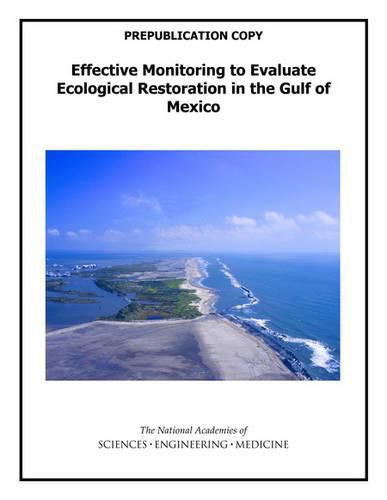Effective Monitoring to Evaluate Ecological Restoration in the Gulf of Mexico
National Academies of Sciences, Engineering, and Medicine,Division on Earth and Life Studies,Water Science and Technology Board,Ocean Studies Board,Committee on Effective Approaches for Monitoring and Assessing Gulf of Mexico Restoration Activities

Effective Monitoring to Evaluate Ecological Restoration in the Gulf of Mexico
National Academies of Sciences, Engineering, and Medicine,Division on Earth and Life Studies,Water Science and Technology Board,Ocean Studies Board,Committee on Effective Approaches for Monitoring and Assessing Gulf of Mexico Restoration Activities
Gulf Coast communities and natural resources suffered extensive direct and indirect damage as a result of the largest accidental oil spill in US history, referred to as the Deepwater Horizon (DWH) oil spill. Notably, natural resources affected by this major spill include wetlands, coastal beaches and barrier islands, coastal and marine wildlife, seagrass beds, oyster reefs, commercial fisheries, deep benthos, and coral reefs, among other habitats and species. Losses include an estimated 20% reduction in commercial fishery landings across the Gulf of Mexico and damage to as much as 1,100 linear miles of coastal salt marsh wetlands.
This historic spill is being followed by a restoration effort unparalleled in complexity and magnitude in U.S. history. Legal settlements in the wake of DWH led to the establishment of a set of programs tasked with administering and supporting DWH-related restoration in the Gulf of Mexico. In order to ensure that restoration goals are met and money is well spent, restoration monitoring and evaluation should be an integral part of those programs. However, evaluations of past restoration efforts have shown that monitoring is often inadequate or even absent.
Effective Monitoring to Evaluate Ecological Restoration in the Gulf of Mexico identifies best practices for monitoring and evaluating restoration activities to improve the performance of restoration programs and increase the effectiveness and longevity of restoration projects. This report provides general guidance for restoration monitoring, assessment, and synthesis that can be applied to most ecological restoration supported by these major programs given their similarities in restoration goals. It also offers specific guidance for a subset of habitats and taxa to be restored in the Gulf including oyster reefs, tidal wetlands, and seagrass habitats, as well as a variety of birds, sea turtles, and marine mammals.
This item is not currently in-stock. It can be ordered online and is expected to ship in approx 4 weeks
Our stock data is updated periodically, and availability may change throughout the day for in-demand items. Please call the relevant shop for the most current stock information. Prices are subject to change without notice.
Sign in or become a Readings Member to add this title to a wishlist.


